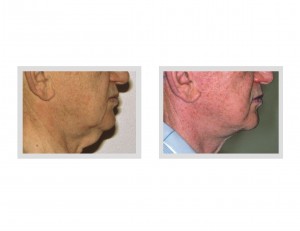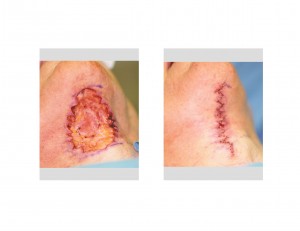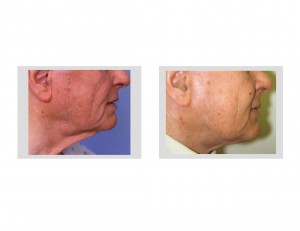The neck wattle is one of the most bothersome of aging facial features, particularly for the older male. Men are often much more concerned about their turkeyneck than they are about the bags and hanging skin around their eyes. That neck wattle not only flops around but really stands out in a shirt and tie as it hangs down onto the collar. It is an unfortunate sign of a man’s age.
The traditional and most effective correction for the neck wattle, at any age, is a facelift. While highly successful, some men seek out a less invasive approach with a quicker recovery. The direct necklift may be an attractive alternative provided one is willing to accept a central neck scar. Such a necklift scar usually does better in a male than a female due the improved scar results that occur in bearded skin.
While the direct necklift involves the simplistic concept of a vertical cutout of central neck skin, the operation is actually more sophisticated and involves numerous nuances in technique. Not only is skin removed but the attached underlying fat down to the platysma muscle is removed as well. With a very wide diastasis of the platysma muscle, all subplatysmal fat down to the strap muscles can also be removed from under the chin down to the thyroid cartilage. The intramuscular platysmal gap is then closed by a vertical row of muscle plication sutures. These maneuvers help to compliment the skin closure in getting a much improved and often dramatic change in the neck angle that not even a full facelift can approximate.

The problem with a vertical neck scar is that it runs perpendicular to the horizontal skin tension lines in the neck and is under tension. This poses the risk of hypertrophic scar formation. This is why in some cases a z-plasty is made in the central area of the scar. An alternative option that I have explored for vertical necklift closure management is a running broken line closure of a symmetrical fashion. Known as a running w-plasty, this is a common scar revision technique that can also be called a ‘zipper line’. This breaks up the tension along the scar line and reduces the risk of poor scar outcomes.



Dr. Barry Eppley
Indianapolis, Indiana


